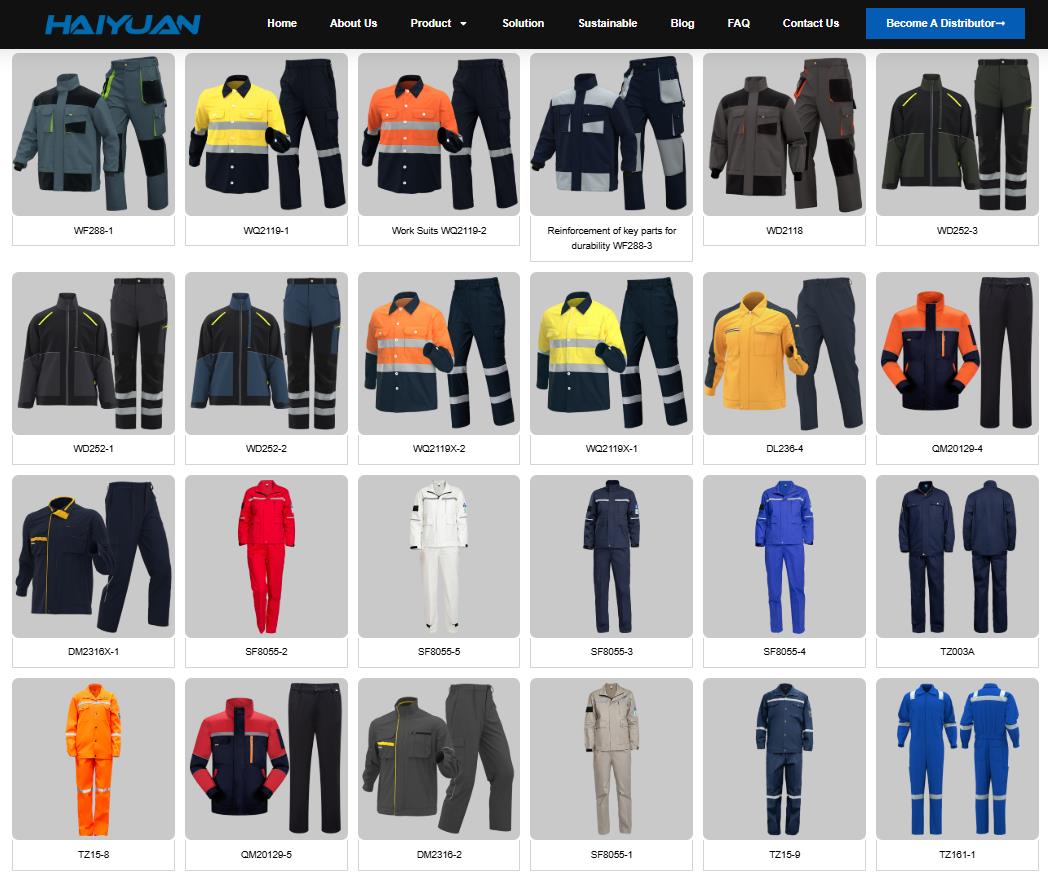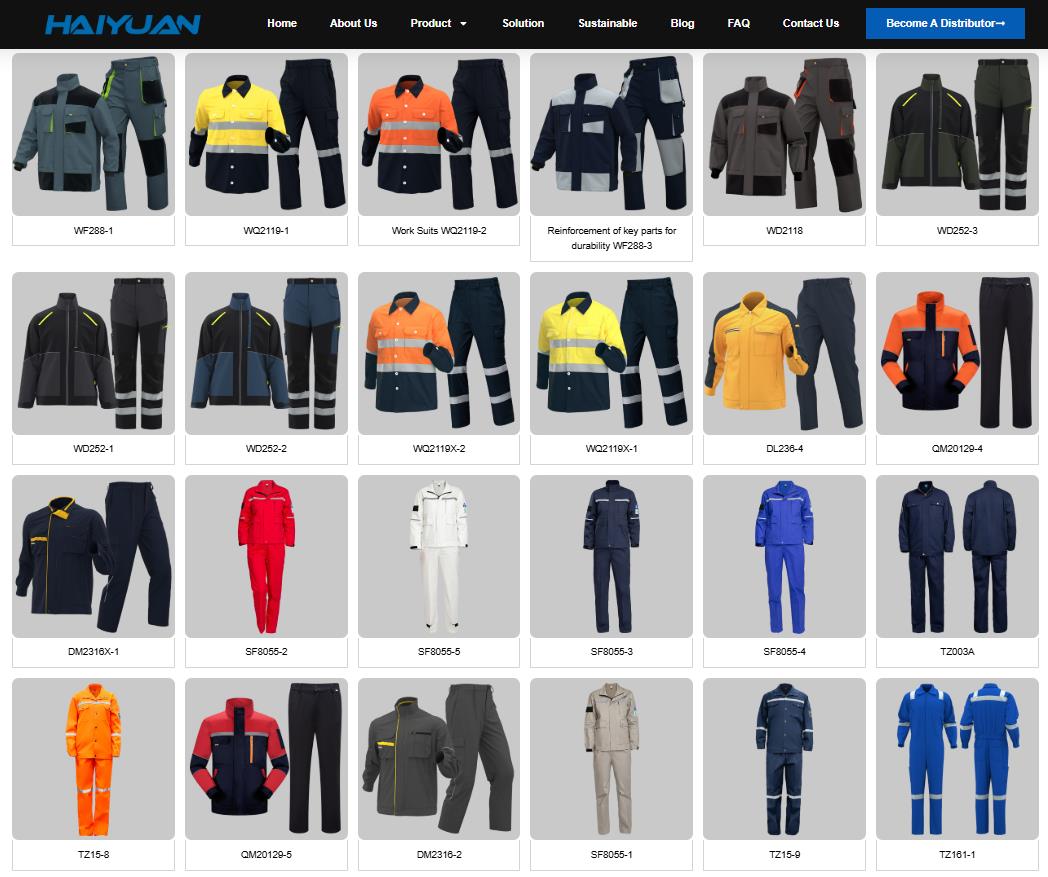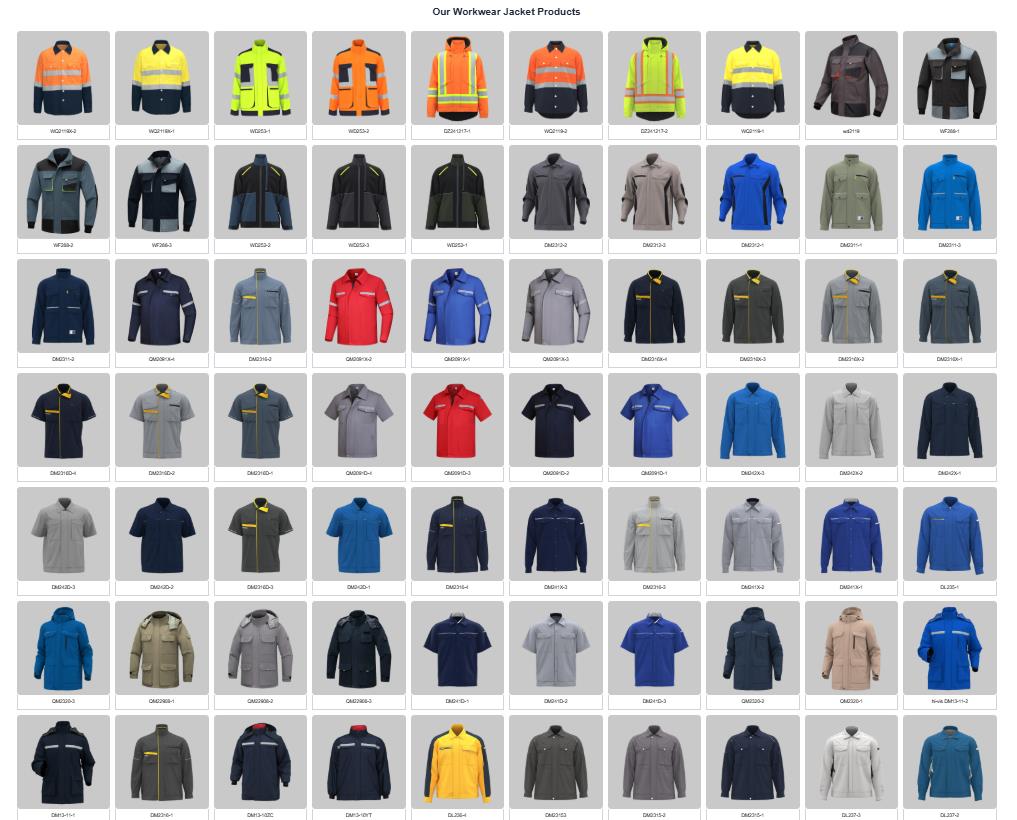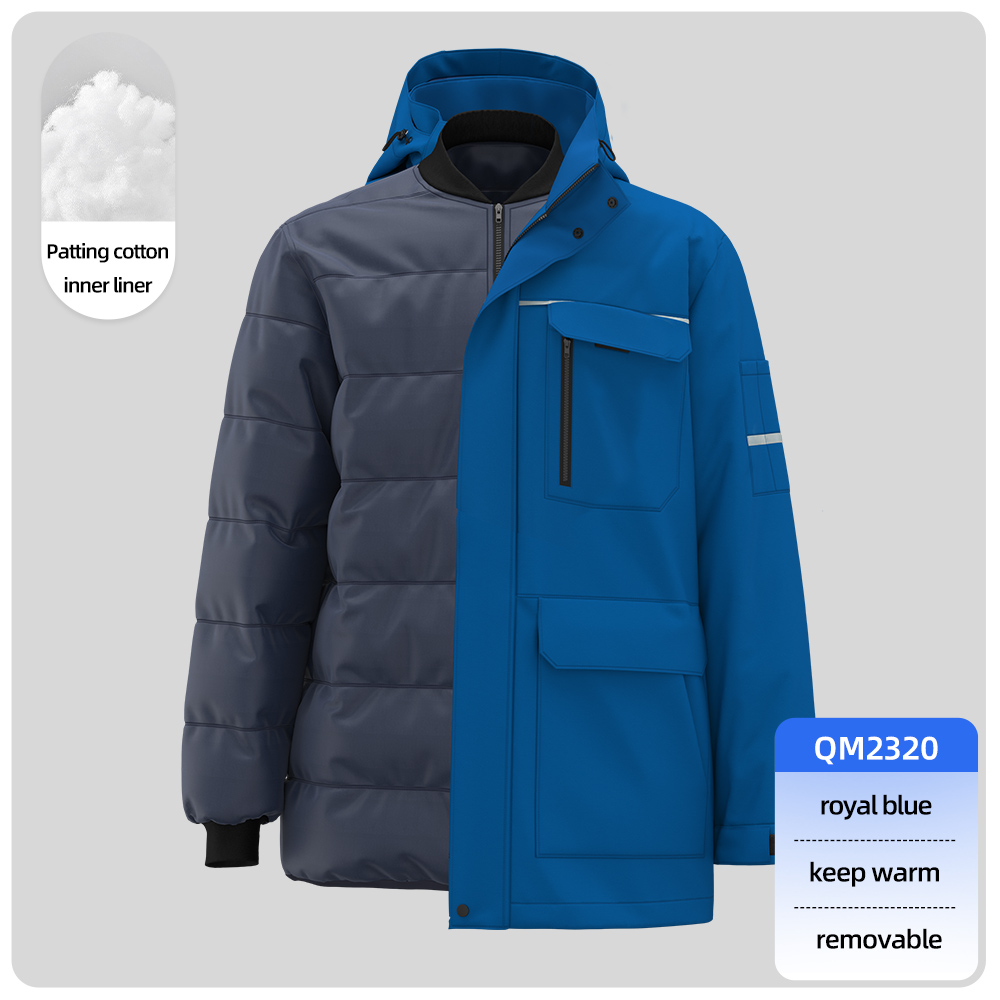Of course. Importing custom work uniforms from China is a very common and cost-effective strategy for many Philippine companies. Here is a comprehensive guide covering the process, key considerations, and how to ensure a successful import.
Key Advantages of Sourcing from China:
-
Cost-Effectiveness: Generally lower manufacturing and labor costs compared to local production or Western countries.
-
Manufacturing Scale: Chinese factories are equipped to handle both small initial orders and large bulk productions.
-
Variety of Fabrics: Access to a wide range of materials, including specialized fabrics (e.g., FR Cotton, Poly-Cotton blends, high-visibility materials).
-
Customization: Expertise in adding logos, embroidery, printing, and custom tailoring to specifications.

haiyuan sewing workshop
Step-by-Step Guide to Importing Custom Work Uniforms
1. Finding and Vetting Reliable Suppliers
This is the most critical step. The wrong supplier can lead to quality issues, delays, and logistical nightmares.
-
Online B2B Platforms:
-
Alibaba.com: The largest and most well-known. Look for suppliers with Gold Supplier status, Assessed Supplier verification, and Trade Assurance protection.
-
Made-in-China.com: Another major platform with a wide range of manufacturers.
-
Global Sources: Often features larger factories and is considered more premium.
-
-
Trade Shows: Attending international apparel and textile fairs (e.g., Canton Fair in Guangzhou) is an excellent way to meet suppliers face-to-face and inspect sample quality.
-
Sourcing Agents: Consider hiring a reliable sourcing agent based in China. They can help you find factories, negotiate prices, conduct quality control inspections, and manage logistics for a fee. This can be invaluable for first-time importers.
How to Vet a Supplier:
-
Company Profile: Check their business license, years in operation, and export experience.
-
Product Range: Do they specialize in workwear/uniforms? Do they offer the fabrics you need?
-
Request Samples: Always order a production sample with your exact logo, fabric, and stitching before placing a bulk order. Pay for the sample and shipping; it’s a worthwhile investment. You can consult Haiyuan work clothes manufacturer for this
-
Communication: Gauge their responsiveness and English proficiency. Clear communication is vital.
-
Client Reviews: Check for reviews and, if possible, ask for references from other international clients.
2. Key Considerations Before Ordering
-
Specifications Sheet: Create a detailed document for the supplier. Include:
-
Design & Tech Pack: Technical drawings of the garment, including precise measurements for each size.
-
Fabric Composition: Exact material blend (e.g., 65% Polyester / 35% Cotton), weight (e.g., 220gsm), and color (provide Pantone codes if possible).
-
Logo Details: Method (embroidery vs. printing), thread color (Pantone), precise placement, and size.
-
Stitching & Trims: Type of thread, button quality, zipper brand/type, and any reinforced stitching requirements.
-
-
Quality Standards: Define your quality tolerance for defects. Discuss this upfront.
-
MOQ (Minimum Order Quantity): Chinese factories often have MOQs, typically ranging from 100-500 pieces per design/color. Negotiate this.
-
Price Negotiation (Incoterms): Understand what the quoted price includes.
-
FOB (Free On Board): You pay for the goods loaded onto the ship at the Chinese port. You are responsible for the main freight, insurance, and all costs from the port of origin onwards. This is the most common term.
-
EXW (Ex Works): You pay only for the finished goods at the factory. You are responsible for arranging and paying for all shipping, customs clearance, and logistics from the factory door. More work for you, but can offer more control.
-
CIF (Cost, Insurance, and Freight): The supplier arranges and pays for shipping and insurance to a port in the Philippines (e.g., Manila Port). You handle customs clearance and onward transportation.

manila port
-
3. The Logistics of Importing to the Philippines
-
Freight Forwarder: It is highly recommended to hire a freight forwarder/customs broker in the Philippines. They will handle the complex process of customs clearance, duties, and taxes on your behalf. Your Chinese supplier can often recommend partners they have worked with before.
-
Shipping Method:
-
Sea Freight (LCL or FCL): The most cost-effective for large, bulky orders like uniforms.
-
LCL (Less than Container Load): You share a container with other shipments. Good for smaller orders.
-
FCL (Full Container Load): You rent an entire container. Best for very large orders.
-
-
Air Freight: Much faster but significantly more expensive. Usually only for very small, urgent samples.
-
-
Import Duties and Taxes: Your customs broker will calculate and pay these on your behalf. Key charges include:
-
Import Duty: A percentage of the goods’ value (depends on the HS code for garments).
-
Value-Added Tax (VAT): Currently 12% on the landed cost (Cost of Goods + Insurance + Freight + Import Duty).
-
Other Fees: Brokerage fees, documentary stamps, etc.
-
-
Required Documents: Your supplier must provide you with:
-
Commercial Invoice
-
Packing List
-
Bill of Lading (B/L) (for sea freight) or Air Waybill (AWB) (for air freight)
-
Certificate of Origin (COO) – This can affect the tariff rate.
-
Sample Process Flowchart
- A[Define Uniform Requirements & Budget] –> B[Find & Vet Suppliers on Alibaba];
- B –> C[Request Quotations & Negotiate (FOB/CIF)];
- C –> D[Order & Evaluate Production Samples];
- D –> E{Approve Sample?};
- E — Yes –> F[Place Bulk Order & Pay Deposit];
- E — No –> B;
- F –> G[Supplier Production & QC];
- G –> H[Final Inspection (Pre-Shipment QC)];
- H –> I[Pay Balance & Supplier Ships Goods];
- I –> J[Freight Forwarder Handles Customs in PH];
- J –> K[Pay Duties & Taxes];
- K –> L[Receive Goods at Warehouse];
Potential Challenges & How to Mitigate Them
-
Quality Discrepancy: The sample was perfect, but the bulk order is different.
-
Mitigation: Hire a third-party quality control inspector to check the goods at the factory before shipment. This is a standard practice.
-
-
Communication Barriers: Misunderstandings due to language or time zones.
-
Mitigation: Use clear, simple English. Communicate via email for a written record. Use pictures and diagrams liberally.
-
-
Shipping Delays: Port congestion, weather, customs holdups.
-
Mitigation: Plan well ahead of your actual deadline. Build buffer time into your schedule.
-
-
Hidden Costs: Unexpected duties, fees, or currency fluctuation.
-
Mitigation: Get a detailed breakdown of all costs from your forwarder before shipping. Use Trade Assurance on Alibaba for payment protection.
-
By following this structured approach, Philippine companies can successfully navigate the process of importing high-quality, custom-branded work uniforms from China, ensuring they get the best value for their investment.
Useful links:
Related reading:
Guide to Importing Work Clothes from China to Indonesia
Is made in China cheaper than Alibaba?
Do garments exported to the Middle East require quality inspection?





